حراجناموجود
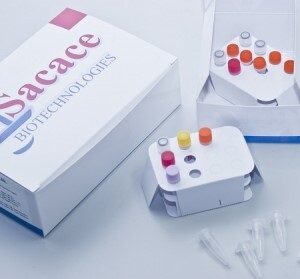
HBV Real-TM Quant DX Real-TM ,sacace,96 t
46,454,817 تومان 38,712,348 تومان

HIV Real-TM Quant DX Real-TM,sacace ,96 t
63,347,469 تومان 52,789,558 تومان
HCV Real-TM Quant DX Real-TM,sacace,96 t
59,727,614 تومان 49,773,012 تومان
ناموجود
HCV Real Real Time detection of Hepatitis C Virus in human plasma For Quantitative REF V1-96/3FRT 96 For use withRotor-Gene® For use with SaCycler-96™ (Sacace) Sacace Biotechnologies via Scalabrini, 44 – HCV Real-TM Quant Dx Handbook Real Time PCR Kit for the Quantitative detection of Hepatitis C Virus in human plasma For Quantitative inVitro Diagnostic Use Gene® 6000/Q (Qiagen) 96™ (Sacace) Biotechnologies Srl – 22100 – Como – Italy Quant Dx Kit for the Quantitative detection of Hepatitis C Virus in human plasma Sacace™ HCV Real-TM Quant Dx VER 06.06.2013 2 KEY TO SYMBOLS USED List Number Contains sufficient for tests Lot Number Version For inVitro Diagnostic Use CONTROL INT Internal control Temperature limitations CONTROL 1 High Positive Control Manufacturer CONTROL 2 Low Positive Control Consult instructions for use CONTROL -N Negative Control Expiration Date CAL 1 Standard 1 Caution! CAL 2 Standard 2 Sacace™ HCV Real-TM Quant Dx VER 06.06.2013 3 TABLE OF CONTENTS NAME ………………………………………………………………………………………………………………………………………… 4 INTRODUCTION …………………………………………………………………………………………………………………………… 4 INTENDED USE …………………………………………………………………………………………………………………………….. 5 PRINCIPLE OF ASSAY …………………………………………………………………………………………………………………….. 5 MATERIALS PROVIDED …………………………………………………………………………………………………………………. 6 MATERIALS REQUIRED BUT NOT PROVIDED ……………………………………………………………………………………. 6 WARNINGS AND PRECAUTIONS …………………………………………………………………………………………………….. 7 STORAGE AND SHIPPING INSTRUCTIONS ………………………………………………………………………………………… 8 STABILITY ……………………………………………………………………………………………………………………………………. 8 QUALITY CONTROL ………………………………………………………………………………………………………………………. 8 SAMPLE COLLECTION, STORAGE AND TRANSPORT ………………………………………………………………………….. 8 INTERFERING SUBSTANCES …………………………………………………………………………………………………………… 9 REAGENTS PREPARATION …………………………………………………………………………………………………………….. 9 RNA ISOLATION …………………………………………………………………………………………………………………………… 9 INTERNAL CONTROL …………………………………………………………………………………………………………………… 10 ASSAY CALIBRATION …………………………………………………………………………………………………………………… 10 ASSAY PROTOCOL ………………………………………………………………………………………………………………………. 11 QUALITY CONTROL PROCEDURE ………………………………………………………………………………………………….. 12 RESULTS INTERPRETATION ………………………………………………………………………………………………………….. 12 PERFORMANCE CHARACTERISTICS ………………………………………………………………………………………………. 13 ANALYTICAL SENSITIVITY ………………………………………………………………………………………………………… 13 LINEAR RANGE ………………………………………………………………………………………………………………………. 13 SPECIFICITY……………………………………………………………………………………………………………………………. 14 GENOTYPE DETECTION …………………………………………………………………………………………………………… 14 CROSS-REACTIVITY …………………………………………………………………………………………………………………. 14 ROBUSTNESS …………………………………………………………………………………………………………………………. 14 PRECISION …………………………………………………………………………………………………………………………….. 15 CROSS CONTAMINATION ………………………………………………………………………………………………………… 15 PROTOCOL FOR ROTORGENE™ 6000/Q ………………………………………………………………………………………… 16 PROTOCOL FOR SaCycler-96® Real Time PCR system ……………………………………………………………………… 21 TROUBLESHOOTING …………………………………………………………………………………………………………………… 23 Sacace™ HCV Real-TM Quant Dx VER 06.06.2013 4 NAME HCV Real-TM Quant Dx INTRODUCTION Hepatitis C virus (HCV) is a single-stranded RNA virus that belongs to the family Flaviviridae. In 1974 HCV was initially recognized as non-A, non-B hepatitis virus (NANBH) until 1989 when the etiologic agent was cloned. It is estimated by the World Health Organization that worldwide there are 170 million HCVinfected persons. The primary mode of HCV transmission is the exposure to infected human blood via intravenous, drug use or unscreened transfusions. Nosocomial HCV transmission during dialysis, colonoscopy, and surgery has also been reported. Perinatal and sexual transmission of the virus is inefficient, but occurs more frequently if the HCV-infected mother or sexual partner is also infected with human immunodeficiency virus type 1. Most people with acute HCV infection are asymptomatic or have mild symptoms (fatigue, nausea, jaundice) but they are unable to clear the virus and in approximately 80% of cases this leads to chronic infection. In 15 to 20% of patients chronic HCV infection progresses at a variable rate to cirrhosis, with a 1 to 4% annual risk of developing hepatocellular carcinoma. The discovery of HCV genome in 1989 by Choo et al, paved the way for the development of serological and molecular assays for viral hepatitis C. In the first generation of an enzyme-linked immunosorbent assay (ELISA), wells of microtitre plates were coated with purified recombinant antigen c100-3 which was derived from the non-structural 4 (NS4) region of the HCV genome. However, ELISA-1 was associated with a high percentage (50% to 70%) of false positive results among low-risk blood donors and in the presence of hyperglobulinemia. Thus, second-generation anti-HCV ELISAs were developed. ELISA-2 by Ortho Diagnostics contained recombinant antigens from the core (c22-3), NS3 region (c33c), and NS4 region (c100-3) as well as a part of c100-3, named 5-1-1. Third generation anti-HCV ELISA was introduced in Europe in 1993 and in the USA in 1996. In addition to the antigens of ELISA-2, thirdgeneration anti-HCV ELISA uses a NS5 region antigen of the viral genome. However, synthetic peptide antigens (c22 and c-100) replaced recombinant antigens of ELISA-2. Other manufactures, for example Abbott Diagnostics, used recombinant antigens derived from the same regions of HCV genome. Despite the increased sensitivity and specificity with each generation of ELISA, false-positive antibody results continue to be observed, particularly among low-risk blood donors. Thus, supplemental or confirmatory assays were developed in parallel with ELISA. The recombinant immunoblot assay (RIBA) was used extensively to confirm the presence or the absence of antibody to HCV epitopes. In RIBA, recombinant or peptide HCV antigens are blotted as separate bands onto a nitrocellulose strip flanked by a weak-positive (Level I) and a moderately positive (Level II) strip control. Since ELISA and RIBA are antibody tests, the positivity of either one or both does not necessarily indicate current HCV infection, as patients who have recovered from infection may remain anti-HCV positive for many years. Conversely, during seroconversion, antibody tests may be negative. The direct molecular biology detection of HCV RNA by reverse-transcriptase polymerase chain reaction (RT-PCR) is considered the gold standard for the diagnosis of HCV infection. Sacace™ HCV Real-TM Quant Dx VER 06.06.2013 5 INTENDED USE HCV Real-TM Quant Dx Kit is a Real-Time Amplification test for the Quantitative detection of Hepatitis C Virus in human plasma and the simultaneous detection of a HCV-specific Internal Control (IC), by dual color detection. Quantitative HCV RNA testing provides prognostic information regarding likelihood of treatment response to interferon monotherapy, interferon plus ribavirin combination therapy and peginterferon plus ribavirin combination therapy. Sustained virological response is defined as testing negative for HCV RNA, 6 months after cessation of therapy. Recent studies suggest that the rate of response to therapy is also important. For istance, conversion to an HCV RNA negative test result after 4 weeks of therapy constitutes a rapid virological response and it is a strong predictor of treatment success. Patients who have not had an early virological response, defined as at least a 2-log decline in HCV RNA, after 12 weeks of therapy are unlikely to respond with an additional 36 weeks of therapy and should stop therapy. HCV Real-TM Quant Dx Real Time HCV assay is not for screening blood, plasma, serum or tissue donors for HCV, or to beused as a diagnostic test to confirm the presence of HCV infection. PRINCIPLE OF ASSAY HCV Real-TM Quant Dx Kit is a Real-Time test for the Quantitative detection of Hepatitis C Virus in human plasma. HCV RNA is extracted from plasma, amplified using real time amplification and detected using fluorescent reporter dye probes specific for HCV or HCV IC. During each round of thermal cycling, amplification products dissociate to single strands at hightemperature allowing primer annealing and extension as the temperature is lowered. Exponentialamplification of the product is achieved through repeated cycling between high and lowtemperatures, resulting in a billion-fold or greater amplification of target sequences. Amplificationof both targets (HCV and IC) takes place simultaneously in the same reaction.Monitoring the fluorescence intensities during Real Time allows the detection and quantification of the accumulating product without having to re-open the reaction tube after the real time amplification. Internal Control (IC) serves as an extraction and an amplification control for each individually processed specimen and to identify possible inhibition. IC is detected in a channel other than the HCV RNA. HCVIC-L is a lyophilized Internal Control and represents recombinant RNA-containing-structure which carried through all steps of analysis from nucleic acid extraction to PCR amplification-detection. The presence of HCV Rec IC allows not only to monitor the extraction procedure and to check possible PCR inhibition but also to verify possible losses of the RNA during extraction procedure thus enabling to calculate precisely the HCV viral load. The assay is standardized against the 4th WHO International Standard for Hepatitis C Virus for Nucleic Acid Amplification Techniques (NIBSC code: 06/102 15) and results are reported in International Units/mL (IU/mL). The target sequence for the HCV Real-TM Quant Dx assay is in the 5´utr region of the HCV genome.This region is specific for HCV and is highly conserved. Sacace™ HCV Real-TM Quant Dx VER 06.06.2013 6 MATERIALS PROVIDED Sacace HCV Real-TM Quant Dx Amplification Reagent Kit RT-PCR REAGENT PACK • 96 vials (0,2 ml) with lyophilized amplification reagents Sacace HCV Real-TM Quant Dx Control Kit1, 2 CONTROL INT • 4 vials with lyophilized reagent HCV-IC-L CONTROL 1 • 4 vials with lyophilized reagent HCV-Pos1-L C+ – Sacace HCV Real-TM Quant Dx High Positive Control* CONTROL 2 • 4 vials with lyophilized reagent HCV-Pos2-L C+ – Sacace HCV Real-TM Quant Dx Low Positive Control* CONTROL – • 4,0 vials, 4,0 ml per vial with Negative Control Sacace HCV Real-TM Quant Dx Calibrator Kit1,2 CAL 1 • 4 vials with lyophilized reagent HCV Quantitative Standard 1 CAL 2 • 4 vials with lyophilized reagent HCV Quantitative Standard 2 1 Standards’ and controls’ concentrations are specific for every lot. 2must be used during the sample preparation procedure (see RNA isolation) MATERIALS REQUIRED BUT NOT PROVIDED • RNA isolation kit (see RNA isolation) • Desktop microcentrifuge for “eppendorf” type tubes • Vortex mixer • Disposable gloves, powderless • Biohazard waste container • Refrigerator, Freezer • Real Time Thermal cycler • Biological safety cabinet approved for working with infectious materials • Pipettes (adjustable) • Sterile pipette tips with filters • Tube racks Sacace™ HCV Real-TM Quant Dx VER 06.06.2013 7 WARNINGS AND PRECAUTIONS In Vitro Diagnostic Medical Device For In Vitro Diagnostic Use Only 1. Read the instructions in this package insert carefully before processing samples. Strict compliance with the user manual is required for optimal PCR results. 2. Wear disposable gloves, laboratory coats and eye protection when handling specimens and reagents. Thoroughly wash hands afterward. 3. Use routine laboratory precautions. Do not eat, drink, smoke, apply cosmetics, or handle contact lenses in laboratory work areas. Do not pipette by mouth. 4. Do not use a kit after its expiration date. 5. Do not mix reagents from different kits. 6. To reduce the risk of nucleic acid contamination due to aerosols formed during pipetting,pipettes with aerosol barrier tips must be used. Change aerosol barrier pipette tips between all liquid transfers. 7. During preparation of samples, compliance with good laboratory practices is essential to minimize the risk of cross-contamination between samples as well as the inadvertent introduction of nucleases into samples during and after the extraction procedure. Proper aseptic technique should always be used when working with RNA or DNA. 8. Use only powder-free gloves. 9. Dispose all specimens and unused reagents in accordance with local regulations. 10. Heparin has been shown to inhibit reaction. The use of heparinized specimens is not recommended. 11. Specimens may be infectious. Use Universal Precautions when performing the assay. 12. Specimens and controls should be prepared in a laminar flow hood. 13. Handle all materials containing specimens or controls according to Good Laboratory Practices in order to prevent cross-contamination of specimens or controls. 14. Clean and disinfect all spills of specimens or reagents using a disinfectant such as 0,5% sodium hypochlorite, or other suitable disinfectant. Follow by wiping down the surface with 70% ethanol. 15. Avoid contact of specimens and reagents with the skin, eyes and mucous membranes. If these solutions come into contact, rinse immediately with water and seek medical advice immediately. 16. This product does not contain potentially infectious components.Material Safety Data Sheets (MSDS) are available on request. 17. Use of this product should be limited to personnel trained in the techniques of amplification. 18. Workflow in the laboratory must proceed in a uni-directional manner, beginning in the Extraction Area and moving to the Amplification Area. Do not return samples, equipment and reagents in the area where you performed previous step. Personnel should be using proper anti-contamination safeguards when moving between areas. Sacace™ HCV Real-TM Quant Dx VER 06.06.2013 8 STORAGE AND SHIPPING INSTRUCTIONS All components of the HCV Real-TM Quant Dx PCR kit must be be stored at +2-8ºC when not in use. All components of the HCV Real-TM Quant Dx PCR kit are stable until the expiration date on the label. The shelf life of reagents before and after the first use is the same, unless otherwise stated. Ship HCV Real-TM Quant Dx PCR kit at +2-8ºC. STABILITY HCV Real-TM Quant Dx Test is stable up to the expiration date indicated on the kit label. The product will maintain performance through the control date printed on the label. Exposure to light, heat or humidity may affect the shelf life of some of the kit components and should be avoided. Components stored under conditions other than those stated on the labels may not perform properly and may adversely affect the assay results.When a positive or negative control value is out of the expected range, it may indicate deterioration of the reagents. Associated test results are invalid and samples must be retested. Assay recalibrationmay be necessary. QUALITY CONTROL In accordance with Sacace’s ISO 13485-Certified Quality Management System, each lot is tested against predetermined specifications to ensure consistent product quality. SAMPLE COLLECTION, STORAGE AND TRANSPORT Note: Handle all specimens as if they are potentially infectious agents. Current studies refer to EDTA or citrate plasma as the most suitablesample materials for HCV detection. Therefore, we recommend the use of thesematerials with the HCV Real-TM Quant Dx. The internal validation of the HCV Real-TM Quant Dx assay has been performedusing human EDTA plasma samples. Other sample materials are not validated. HCV Real-TM Quant Dx assay is only for use with human plasma specimens* 1. EDTA tubes may be used with the HCV Real-TM Quant Dx. Follow sample tube manufacturer’s instructions. 2. Whole blood collected in EDTA should be separated into plasma and cellular components by centrifugation at 800-1600 x g for 20 min within six hours. The isolated plasma has to be transferred into a sterile polypropylene tube. Plasma may be stored at 2-8°C for an additional 3 days. Alternatively, plasma may be stored at -18°C for up to one month or 1 year when stored at -70°C. 3. Do not freeze whole blood. 4. Specimens anti-coagulated with heparin are unsuitable for this test. 5. Thaw frozen specimens at room temperature before using. 6. Whole blood must be transported at 2-25°C and processed within 6 hours of collection. Plasma may be transported at 2-8°C or frozen. 7. Transportation of clinical specimens must comply with country, federal, state and local regulations for the transport of etiologic agents. * Serum can be used also as starting material on some occasions. In this cases the analytical sensitivity of the kit HCV RealTM Quant Dx is the same, but the clinical sensitivity may be significantly decreased because of the precipitation of viral particles during the clot retraction phase of serum preparation. Sacace™ HCV Real-TM Quant Dx VER 06.06.2013 9 INTERFERING SUBSTANCES Elevated levels of bilirubin (≥15 mg/dl) and lipids (≥800 mg/dl) do not influence the system. Heparin (≥10 IU/ml) affects the PCR.Samples that have been collected in tubes containing heparin as ananticoagulant should not to be used. Also, samples of heparinized patients mustnot be used. REAGENTS PREPARATION Before starting any HCV Real-TM Quant Dx protocol prepare the following reagents: 1. Choose the requested quantity of lyophilized controls and calibrators and centrifuge briefly. 2. Add Negative Control( CONTROL -) as for table below: Lyophilized reagent CONTROL – , µl CAL 1 1100 CAL 2 1100 CONTROL 1 1100 CONTROL 2 1100 CONTROL INT 300 3. Close the tubes and incubate all tubes for 2 min at room temperature. Vortex periodically. 4. Centrifuge the tubes for 5 sec. 5. Dissolved reagents must be stored at 2-8 °C and always protected from light up to 30days (do not freeze!) RNA ISOLATION The following isolation kitis recommended: ⇒ Magno-Virus (Sacace, REF K-2-16): sample volume 1000 µl ⇒ SaMag-24 (Sacace, REF SM102): automated nucleic acid purification system: SaMag Viral Nucleic Acid Extraction Kit sample volume 400 µl Please carry out the RNA extraction according to the manufacturer’s instructions. Add 10µl of CONTROL INTduring the RNA isolation procedure directly to the sample/lysis mixture in all samples, controls, calibrators (see Internal Control). High and Low Positive Controls (CONTROL 1 and CONTROL 2) as well as Neg. Control (CONTROL -) must be always used with patients specimens during RNA isolation procedure. These controls must be treated in the same way as patients specimens followingthe Handbook of used RNA purification kit. Sacace™ HCV Real-TM Quant Dx VER 06.06.2013 10 INTERNAL CONTROL HCV-IC-Lrepresents recombinant RNA-containing-structure which carried through all steps of analysis from nucleic acid extraction to PCR amplification-detection. The presence of HCV-IC-Lallows not only to monitor the extraction procedure and to check possible PCR inhibition but also to verify possible losses of the RNA during extraction procedure thus enabling to calculate precisely the HCV viral load. An IC threshold cycle [Ct] assay validity parameter is established during a calibration run.A defined, consistent quantity of IC(10 µl) is introduced into each specimen, calibrator, and control at the beginning of sample preparation and measured on the real time pcr instrument to demonstrate proper specimen processing and assay validity. The median amplification cycle at which the IC target sequence fluorescent signal is detected during the calibration procedure (two calibrators are run in replicates of three) establishes an IC Ct validity range to be met by all subsequent processed specimens. The established range of samples IC Ct = Medium IC Ct of 6 calibrators ± 2 cycles Specimens whose IC Ct value exceeds the established range must be retested starting from sample preparation. ASSAY CALIBRATION A calibration curve is required to quantitate the HCV RNA concentration of specimens and controls.Two assay calibrators are run in replicates of three to generate a calibration curve (HCV concentration versus the threshold cycle [Ct] at which a reactive level of fluorescent signal is detected). Thecalibration curve slope and intercept are calculated and stored on the instrument. The concentrationof HCV RNA in a sample is calculated from the stored calibration curve. The quantitative standards CAL1 and CAL2 must be treated in the same way as patients specimens. Before the first use of a new lot of HCV Real-TM Quant Dx,6 calibrators run must be performed beginning from RNA extraction procedure to generate a calibration curve (two calibrators are run in replicates of three): • Prepare 3 sample preparation tubes for CAL1, 3 tubes for CAL2 for each calibration run. • Add 10 µl of CONTROL INT to each tube; • AddCAL1 and CAL2 to the appropriate tubes inthe quantity indicated in the manual of RNA purification kit (for example, 1000 µl using Magno-Virus kit (Sacace, REF K-2-16) Follow the samplepreparation procedure described in the Handbook of used RNA purification kit. Sacace™ HCV Real-TM Quant Dx VER 06.06.2013 11 ASSAY PROTOCOL Note: Reaction Mix volume = 50µl No attempt should be made to weigh out any portion of the freeze-dried material prior to reconstitution REAL TIME PCR CALIBRATION PROCEDURE: 1. Prepare 6 reactiontubes with lyophilized reagents to perform PCR of extracted calibrators. 2. Add 50µl of eluted samples obtained from RNA purification of 6 calibrators. Follow the procedure for amplification and detection as described in this manual. Once an HCV Real-TM Quant Dx calibration run is accepted and stored, it may be used until the lot in use expires. During this time, all subsequent samples may be tested without further calibration by importing the experiment with Calibration Curve in the experiment with clinical samples using the same HCV Real-TM Quant Dx lot number. REAL TIME PCR SAMPLE PROCEDURE: 1. Prepare requested quantity of reactiontubes with lyophilized reagents to perform PCR of extracted samples and controls. 2. Add 50µl of eluted samples obtained from RNA purification step. Close the tubes and transfer them into the Real Time PCR instrument. Create a temperature profile on your Real-time instrument as follows: Stage Тemp,°С Time Fluorescence detection Cycle repeats Hold 50 15 min – 1 Hold 95 15 min – 1 Cycling 95 5 s – 60 20 s – 5 72 15 s – Cycling 2 95 5 s – 60 40 30 s* FAM, JOE/HEX/Cy3 72 15 s – * 20 s using Rotor-Gene™ 6000/Qinstrument Sacace™ HCV Real-TM Quant Dx VER 06.06.2013 12 QUALITY CONTROL PROCEDURE A defined quantity of Internal Control (IC) is introduced into each sample at the beginning of sample preparation procedure in order to control the extraction process of each individual sample and to identify possible reaction inhibition. One replicate each of the Negative Control (CONTROL – ), the HCV High (+) Control (CONTROL 1) and the HCV Low (+) Control (CONTROL 2) must be included in each test run. If the controls are out of their expected range (see Data Sheet), all of the specimens and controls from that run must be processed beginning from the sample preparation step. RESULTS INTERPRETATION The Internal Control (IC) is detected on FAM/Green channel and HCV RNA on Joe/Yellow/HEX channel. Each DNA amplification is associated with generation of a fluorescence signal measurable in FAM/Green channel (for IC) or in Joe/Yellow/HEX channel (for HCV RNA) resulting in a sigmoid growth curve (log scale). The data analysis is performed according to manufacturer’s instructions (Operation manual Rotor-Gene™ 6000/Q, Qiagen and Instrument Manual SaCycler-96™, Sacace) using the respective software and considering the recommendations of thehandbook. Check the obtained results to ensure that the run is valid and to interpret results. HCV RNA is determined basingon CT values and astandard curve resulting from analysis of quantitation standards. HCV RNA concentration is expressed in IU/ml. If the result is more than 100,000,000 IU/ml, then it will be displayed as the result more than 100,000,000 IU HCV/ml. If the result is more than the linear measurement range, the sample can be analyzed after 10x dilution and the obtained result should be multiplied by 10. If the result is less than 13 IU/ml in case of extraction from 1 ml, then it will be displayed as the result less than 13 IU HCV/ml. Sacace™ HCV Real-TM Quant Dx VER 06.06.2013 13 PERFORMANCE CHARACTERISTICS The HCV Real-TM Quant Dx Kit was evaluated according to the common technicalspecifications (CTS) for in vitro diagnostic medical devices (2009/108/EC) and European Pharmacopoeia 7.0, p. 2.6.21. Nucleic acid amplification techniques (07/2010:20621). ANALYTICAL SENSITIVITY The analytical sensitivity or Limit of Detection (LOD) is defined as the smallest amount of HCV RNA that can be precisely detected with a probability of 95% or greater. The LOD in consideration of RNA purification from the sample is determined using HCV-positive clinical specimens in combination with a particular extraction method. HCV RNA was extracted with Magno-Virus purification kit (Sacace, REF K2-16) according to the manufacturer’s instructions. The LOD of the HCV Real-TM Quant Dx assay is 13 IU/mL with the 1.0 mL sample preparation procedure. The LOD was determined by testing dilutions of the 4th WHO International Standard for Hepatitis C Virus for Nucleic Acid Amplification Techniques (NIBSC code: 06/102 15) prepared in HCV negative human plasma.The resultswere determined by Probit analysis. LINEAR RANGE Linear range or Linearity of an assay is its ability to obtain test results that are directly proportional to the concentration of the nucleic acid. In other words, it is the interval between the upper and the lower concentration where test results are directly proportional to the concentrations. The upper limit of quantitation for the HCV Real-TM Quant Dx assay is 100 million IU/mL and the lower limit of quantitation is equal to the Limit of Detection (13 IU/mL with the 1.0 mL sample preparation procedure). The linear range of the HCV Real-TM Quant Dx kit was determined by analyzing a dilution series (from 8,00 log IU/ml to 1,00 log IU/ml)of an HCV synthetic quantitative standard calibrated against the 4th WHO International HCV RNA Standard.The results, representative of the HCV Real-TM Quant Dx assay linearity, areshown in Figure 1. y = 0,965x + 0,163 R² = 0,978 0 1 2 3 4 5 6 7 8 9 0 2 4 6 8 10 HCV Real-TM Quant Dx Conc., log IU/ml Target Concentration, log IU/ml Sacace™ HCV Real-TM Quant Dx VER 06.06.2013 14 SPECIFICITY The analytical specificity of the primers and the probes was validated with 100 negative plasma samples obtained from the European Directorate for the Quality of Medicine & HealthCare (EDQM). They did not generate any signal with the specific HCV primers and probes. The specificity of the kit HCV Real-TM Quant Dx was 100% GENOTYPE DETECTION The detectability of all relevant subtypes and genotypes has thus been ensured. All tested HCV RNA genotypes give positive results with HCV Real-TM Quant Dx kit. CROSS-REACTIVITY The potential cross-reactivity of the kit HCV Real-TM Quant Dx was tested against the group control listed in the following table. It was not observed any cross-reactivity with these pathogens. Table 1: Testing the specificity of the kit with other pathogens: Control group Results HCV (Joe/Yellow channel) Results IC (Fam/Green channel) Cytomegalovirus (CMV) – + Epstein Barr virus (EBV) – + Hepatitis B virus (HBV) – + Hepatitis D virus (HDV) – + Hepatitis A virus (HAV) – + Parvovirus B19 – + Herpes Zoster Virus (VZV) – + Human immunodeficiency virus 1 – + Herpes simplex virus 1 – + Herpes simplex virus 2 – + Human herpes virus 6 – + Human herpes virus 8 – + West Nile Virus (WNV) – + Tick-borne encephalitis virus (TBEV) – + Adenovirus type 2 – + Adenovirus type 4 – + Adenovirus type 7 – + Rotavirus A – + Escherichia coli (E.coli) – + Staphylococcus aureus – + Streptococcus pyogenes – + Streptococcus agalactiae – + ROBUSTNESS The robustness of the assay is a measure of its capacity to remain unaffected by small and accidental variations in method parameters and provides an indication of its reliability during normal usage. As HCV Real-TM Quant Dx kit contains RT-PCR REAGENTS PACK 96 vials with ready-to-use lyophilized reagents, the only probable variation during normal usage of the kit could be the different volume of added eluted samples obtained from RNA purification step. The robustness of HCV Real-TM Quant Dx kit was evaluated adding different volume of eluted sample (from 46 to 52 µl). 20 HCV RNA negative plasma pools spiked with HCV RNA to a final concentration of 3 times 95 per cent cut-off value were added with small variations (from 46 to 52 µl) to the vials containing lyophilized reagents. All tested samples were found positive for HCV RNA. Sacace™ HCV Real-TM Quant Dx VER 06.06.2013 15 PRECISION The precision of the HCV Real-TM Quant Dx kit was evaluated for the manual sample preparation using the SaCycler-96 instruments. The precision data of the HCV Real-TM Quant Dx kit allow the determination of the total variance of the assay. The total varianceconsists of the intra-assay variability (variability of multiple results of samples ofthe same concentration within-run), the inter-assay variability(variability of multiple results of the assay generated on different instruments and different days) and the inter-lot variability (variability of multiple results of the assay using various lots). The data obtained were used to determine the standard deviation and the coefficient of variation for the specific pathogen and the internal control. The total variability calculated was: mean SD Log Ct HCV mean SD Log Calc Conc (log IU/ml) mean SD Log Ct IC 0,0045 0,0608 0,0046 mean CV % Ct HCV mean CV % Calc Conc (IU/ml) mean CV % Ct IC 1,05 14,68 1,07 Intra-assay variability SD log Ct HCV SD log Calc Conc (log IU/ml) SD log Ct IC 0,004 0,064 0,004 CV % Ct HCV CV % Calc Conc (IU/ml) CV % Ct IC 0,86 15,70 0,81 Inter-assay variability SD log Ct HCV SD log Calc Conc (log IU/ml) SD log Ct IC 0,006 0,050 0,005 CV % Ct HCV CV % Calc Conc CV % Ct IC 1,371 11,607 1,086 Inter-lot variability SD log Ct HCV SD log Calc Conc (log IU/ml) SD log Ct IC 0,004 0,069 0,006 CV % Ct HCV CV % Calc Conc CV % Ct IC 0,925 16,738 1,319 CROSS CONTAMINATION The cross contamination of the HCV Real-TM Quant Dx kit was evaluated for the manual sample preparation using RotorGene Qinstrument. To demonstrate absence of cross contamination a panel of 20 samples consisting of alternate samples of negative plasma spiked with high concentration of HCV and negative plasma samples was tested. All the positive samples were correctly detected and gave a fluorescence positive reaction with good and clear sigmoid-shaped fluorescence curves and a Cycle threshold (Ct) less than 35 both in HCV channel and in Internal Control channel. All the negative samples gave no fluorescence signal in the HCV channel and the Internal Control channel showing no cross contamination at all. Sacace™ HCV Real-TM Quant Dx PROTOCOL FOR ROTORGENE™ 6000/Q 1. Switch on instrument by pressing the main switch, start Rotor 2. Start a New Run Figure 1. Start “New Run” 3. Select the appropriate rotor, check the “Locking Ring Attached” box and click “Next” Figure 2. Rotor and Locking Ring 4. Input operator’s name, notes, and reaction volume Figure 3. Reaction Volume TM Quant Dx VER 0 PROTOCOL FOR ROTORGENE™ 6000/Q Switch on instrument by pressing the main switch, start Rotor-Gene softw Select the appropriate rotor, check the “Locking Ring Attached” box and click “Next” Figure 2. Rotor and Locking Ring Input operator’s name, notes, and reaction volume (50). Subsequently press “Next”. 06.06.2013 16 Gene software Select the appropriate rotor, check the “Locking Ring Attached” box and click “Next”. . Subsequently press “Next”. Sacace™ HCV Real-TM Quant Dx VER 06.06.2013 17 5. Click the “Edit Profile” and program the temperature profile. Figure 4. Edit Profile Figure 5. Hold: Reverse transcription step Figure 6. Hold 2: Enzyme activation step Sacace™ HCV Real-TM Quant Dx VER 06.06.2013 18 Figure 7. Cycling: 1st Amplification Step Figure 8. Cycling: 2nd Amplification and Detection Step 6. Click “Gain Optimisation” in the “New Run Wizard” menu and set the following parameters: Figure 9. Gain Optimisation Sacace™ HCV Real-TM Quant Dx VER 06.06.2013 19 7. Place PCR tubes carefully onto RotorGene™ 6000/Q rotor, close lid and start run. Figure 10. Starting the run. 8. Enter sample positions and names (“unknown” for samples, “Negative Control” and “Positive Control” for controls). If the kit calibration run is performing, use name “standard” for CAL1 and CAL2 and enter the concentrations of the Quantitative Standards reported on HCV Real-TM Quant Dx Data Card. 9. User must import the calibration experiment with Standard Curves to subsequent experiments with clinical samples to have quantitative results.To do this click Import Curve, select From Other Run option, choose the Calibration file to be imported and Import Joe/Yellow Channel. Sacace™ HCV Real-TM Quant Dx VER 06.06.2013 20 Data Analysis IC amplification analysis (Cycling A.Green (Fam) 1. Press Analysis and then select Quantitation → Cycling A.Green (Cycling A.Fam) → Show 2. Turn off the automatic option Threshold. 3. Activate the Dynamic tube and Slope Correct buttons in the main window menu (Quantitation analysis). 4. In the table of results (QuantitationAnalysis) select More settings and set NTC Threshold to 10% 5. Select Threshold: 0,03 6. In the table of results (QuantitationResults) appear the values of Ct (Threshold cycle) which should be ≤ 30 (see Internal Control)of the IC (Fam/Green channel). HCV amplification analysis (Cycling A.Yellow(Joe) 1. Press Analysis and then select Quantitation → Cycling A.Yellow (Cycling A.Joe) → Show 2. Turn off the automatic option Threshold. 3. Press the buttons Dynamic Tube, Slope Correct 4. In the table of results (QuantitationAnalysis) select More settings and set NTC Threshold to 10%. 5. Select Threshold: 0,03 6. In the table of results (QuantitationAnalysis) appear the values of Ct (Threshold cycle). 7. In the new window QuantitationResults appear values of HCV RNA IU/ml. Sacace™ HCV Real-TM Quant Dx VER 06.06.2013 21 PROTOCOL FOR SaCycler-96® Real Time PCR system Recommended settings: 1. Double click on the RealTime_PCR software icon 2. Select Device handling. 3. Select the plugged device and click “Connect”. 4. Select from Menu “Test -> Create/Edit test” . Click “Create new test” button and enter name “HCV Real-TM Quant DX”, click OK. 5. Select: Analysis Type “Multiplex detection” and Method “Threshold”, Standard Quantity “2” and copy “3” (total 6 standards), 2 positive controls, 1 negative control, FAM (IC) and R6G (s), 50 µl of Mixture volume: 6. Under “Amplification Program”, click to create a new program. 7. Select “Preliminary heating” and choose the template below. Click Apply, then program the instrument as follows. 8. Click and save the amplification program file in a convenient folder. Then click OK in the previous window. 9. Click add test button , then select “HCV Real-TM Quant DX” from dropdown menu Test, indicate the number of samples and click first Add, then OK. Sacace™ HCV Real-TM Quant Dx VER 06.06.2013 22 10. Use the default Autofill positioning of PCR tubes into the plate or the Free Filling to chose manually the position of the tubes. In the “Concentration” column, click the green circle and insert the HCV standard values reported in the DataCard (see example below). 11. Clicking Apply will bring to the Start Program window . 12. The thermalcycling program will be the following: 13. Click Open block, insert PCR tubes into the instrument, click Close block and then click to start the PCR amplification program. 14. After the run is complete click OK to interpret the results. 15. Select analysis type “Multiplex detection”, “Threshold (Ct)” method and “Quantitative” from results table. 16. Click on parameter of data analysis icon , select “Normalization data” option and click “Apply”. 17. Adjust the threshold line using mouse drag and drop. Suggested values for Threshold line are: 40 for HEX channel, 25 for FAM channel (slightly adapt threshold level according to your result curves). 18. Viral load results will appear in the “Results” column for HEX channel. Final results are already expressed in IU/ml. 19. To import standard curve from other run, click on “Additional standards” tab and select the run file containing standards. Then come back to “Results” tab to see viral load results. NOTE: for IVD version of SaCycler, since the HCV Real-TM DX protocol is already inserted in the PC supplied with the instrument, ignore points 4-8 and just follow instructions from point 9. Sacace™ HCV Real-TM Quant Dx VER 06.06.2013 23 TROUBLESHOOTING 1. Weak (Ct > 30) or exceeding the established range signal (see Internal Control)of the IC (Fam/Green channel): retesting of the sample is required. • The PCR was inhibited. ⇒ Make sure that you use a recommended RNA extraction method and follow the manufacturer’s instructions. • The reagents storage conditions didn’t comply with the instructions. ⇒ Check the storage conditions • The PCR conditions didn’t comply with the instructions. ⇒ Check the PCR conditions and for the IC detection select the fluorescence channel reported in the protocol. • The IC was not added to the sample during the pipetting of reagents. ⇒ Make attention during the RNA extraction procedure. 2. The correlation coefficient R2 is less than 0.9: retesting of all samples is required. 3. The calculated concentrations of CONTROL 1 and/or CONTROL 1are different from given control concentrations, reported in the Data Sheet: retesting of all samples is required. 4. Any signal on the Joe/HEX/Yellow channel with Negative Control of extraction. • Contamination during RNA extraction procedure. All samples results are invalid. ⇒ Decontaminate all surfaces and instruments with sodium hypochlorite and ethanol. ⇒ Use only filter tips during the extraction procedure. Change tips among tubes. ⇒ Repeat the RNA extraction with the new set of reagents. 5. Any signal with Negative PCR Control. • Contamination during PCR preparation procedure. All samples results are invalid. ⇒ Decontaminate all surfaces and instruments with sodium hypochlorite and ethanol or special DNA decontamination reagents. ⇒ Pipette the Positive controls at the end. ⇒ Repeat the PCR preparation with the new set of reagents. Sacace™ HCV Real-TM Quant Dx REFERENCES 1. World Health Organization. Hepatitis C 2. Alter, H. 1999.Discovery of non3. Bendinelli, M., M. Pistello, F. Maggi, and M. Vatteroni. TT virus, p.306–337. In S.Specter, R.L. Hodinka, and S.A. Washington, D.C. 4. Choo, Q.-L., G. Kuo, A.J. Weiner, L.R. Overby, D.W. Bradley, and M. Houghton. 1989. Isolation of a cDNA clone derived from a blood-borne non-A, non-B viral hepatitis genome. Science 5. Lauer, G.M., and B.D. Walker. 2001. Hepatitis C virus infection .N. Engl. J. Med. 345: 41 6. De Medina M, Schiff ER. Hepatitis C: diagnostic assays. Sem Liver Dis, 1995, 1, 33 7. Kao, J.-H., M.-Y. Lai, Y.-T. Hwang, P. hepatitisC without anti-hepatitis C antibodies by second generation assay: a clinicopathologic study and demonstration of the usefulness of a third generation assay. Dig. Dis. Sci. 41: 161 8. Schiff ER, de Medina M, Kahn RS. New perspectives in the diagnosis of hepatitis C. Sem Liver Dis, 1999, 19, 3 9. Lok ASF, Gunaratnam NT. Diagnosis of hepatitis C. Hepatology, 1997, 26(Suppl 1), 48 10. Pawlotsky J M , Bouvier-Alias M, Hezode C, Darthuy F, quantification. Hepatology. 2000; 32: 654 11. Manns MP, McHutchisonJG,GordonSC,etal.Peginterferonalfa 2bplusribavirinforinitialtreatmentofchronichep 12. Weiland O, Braconier JH, Fryden A, Norkrans G, Reichard O, Uhnoo I. Influence of pretreatment factors on outcome of interferon-alpha treatment of patients with chronic hepatitis C. Scand J Infect Dis. 1999 13. Fried MW, Shiffman ML, Reddy KR,et al. Peginterferon alfa 2002; 347:975-982. 14. Jensen DM, Morgan TR, Marcellin peginterferon alpha-2a (40kd)/ribavirin therapy. Hepatology. 2006; 43:954 15. Davis GL, Wong JB, McHutchison JG, Manns MP, Harvey J, Albrecht J. Early virologic response to tr peginterferonalfa-2b plus ribavirin in patients with chronic hepatitis C. Hepatology. 2003; 38:645 16. Terrault NA, Pawlotsky JM, McHutchisonJ,et al. Clinical utility of viral load measurements in individuals with chronic hepati infection on antiviral therapy. J Viral Hepat. 2005; 12:465 * Rotor-Gene™ Technology is a registered trademark of Qiagen * SaCycler™ is a registered trademark of Sacace Biotechnologies SacaceBiotechnologiesSrl via Scalabrini, 44 mail: info@sacace.com TM Quant Dx VER 0 World Health Organization. Hepatitis C—Global prevalence (update). WklyEpidemiol Rec, 1999, 74, 425 -A, non-B hepatitis and identification of its etiology. Am. J. Med.107 (Suppl.6B):16S Bendinelli, M., M. Pistello, F. Maggi, and M. Vatteroni. 2000. Blood-borne hepatitis viruses: hepatitis B, C, D, and G viruses and 337. In S.Specter, R.L. Hodinka, and S.A. Young (ed.), Clinical virology manual, 3 L., G. Kuo, A.J. Weiner, L.R. Overby, D.W. Bradley, and M. Houghton. 1989. Isolation of a cDNA clone derived from B viral hepatitis genome. Science 244: 359–362. Lauer, G.M., and B.D. Walker. 2001. Hepatitis C virus infection .N. Engl. J. Med. 345: 41–52 Hepatitis C: diagnostic assays. Sem Liver Dis, 1995, 1, 33–40 T. Hwang, P.-M. Yang, P.-J. Chen, J.-C. Sheu, T.-H. Wang, H.-C. Hsu, and D. hepatitis C antibodies by second generation assay: a clinicopathologic study and demonstration of the usefulness of a third generation assay. Dig. Dis. Sci. 41: 161–165. ER, de Medina M, Kahn RS. New perspectives in the diagnosis of hepatitis C. Sem Liver Dis, 1999, 19, 3 Lok ASF, Gunaratnam NT. Diagnosis of hepatitis C. Hepatology, 1997, 26(Suppl 1), 48–56S. Alias M, Hezode C, Darthuy F, Remire J, Dhumeaux D. Standardization of hepatitis C virus RNA quantification. Hepatology. 2000; 32: 654-659. Manns MP, McHutchisonJG,GordonSC,etal.Peginterferonalfa-2bplusribavirincompared 2bplusribavirinforinitialtreatmentofchronichepatitisC:a randomized trial.Lancet.2001;358:958-965 Weiland O, Braconier JH, Fryden A, Norkrans G, Reichard O, Uhnoo I. Influence of pretreatment factors on outcome of alpha treatment of patients with chronic hepatitis C. Scand J Infect Dis. 1999; 31: 115 Fried MW, Shiffman ML, Reddy KR,et al. Peginterferon alfa-2a plus ribavirin for chronic hepatitis C virus infection.NEngl J Med. Jensen DM, Morgan TR, Marcellin P, et al. Early identification of HCV genotype 1 patients responding to 24weeks 2a (40kd)/ribavirin therapy. Hepatology. 2006; 43:954-960 Davis GL, Wong JB, McHutchison JG, Manns MP, Harvey J, Albrecht J. Early virologic response to tr 2b plus ribavirin in patients with chronic hepatitis C. Hepatology. 2003; 38:645 Terrault NA, Pawlotsky JM, McHutchisonJ,et al. Clinical utility of viral load measurements in individuals with chronic hepati on antiviral therapy. J Viral Hepat. 2005; 12:465-472 Gene™ Technology is a registered trademark of Qiagen * SaCycler™ is a registered trademark of Sacace Biotechnologies SacaceBiotechnologiesSrl via Scalabrini, 44 – 22100 –Como – Italy Tel +390314892927 Fax +390314892926 info@sacace.com web: www.sacace.com 06.06.2013 24 Global prevalence (update). WklyEpidemiol Rec, 1999, 74, 425–427. identification of its etiology. Am. J. Med.107 (Suppl.6B):16S–20S. borne hepatitis viruses: hepatitis B, C, D, and G viruses and Young (ed.), Clinical virology manual, 3rd ed. ASM Press, L., G. Kuo, A.J. Weiner, L.R. Overby, D.W. Bradley, and M. Houghton. 1989. Isolation of a cDNA clone derived from C. Hsu, and D.-S. Chen. 1996. Chronic hepatitis C antibodies by second generation assay: a clinicopathologic study and demonstration of the ER, de Medina M, Kahn RS. New perspectives in the diagnosis of hepatitis C. Sem Liver Dis, 1999, 19, 3–15. 56S. Remire J, Dhumeaux D. Standardization of hepatitis C virus RNA 2bplusribavirincompared with interferonalfa965 Weiland O, Braconier JH, Fryden A, Norkrans G, Reichard O, Uhnoo I. Influence of pretreatment factors on outcome of ; 31: 115-118. 2a plus ribavirin for chronic hepatitis C virus infection.NEngl J Med. P, et al. Early identification of HCV genotype 1 patients responding to 24weeks Davis GL, Wong JB, McHutchison JG, Manns MP, Harvey J, Albrecht J. Early virologic response to treatment with 2b plus ribavirin in patients with chronic hepatitis C. Hepatology. 2003; 38:645-652 Terrault NA, Pawlotsky JM, McHutchisonJ,et al. Clinical utility of viral load measurements in individuals with chronic hepatitis C Italy Tel +390314892927 Fax +390314892926
حمل و نقل کالا
درخواست محصول
.فقط مشتریانی که این محصول را خریداری کرده اند و وارد سیستم شده اند میتوانند برای این محصول دیدگاه(نظر) ارسال کنند.
محصولات پیشنهادی
Sinapure-DNA (Cell culture, Tissues, Gram negative Bacteria and CSF)50t – PR881613-EX6011
امتیاز 0 از 5



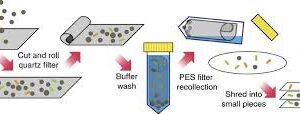


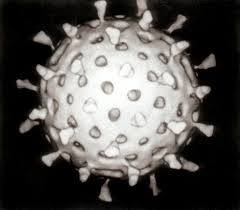

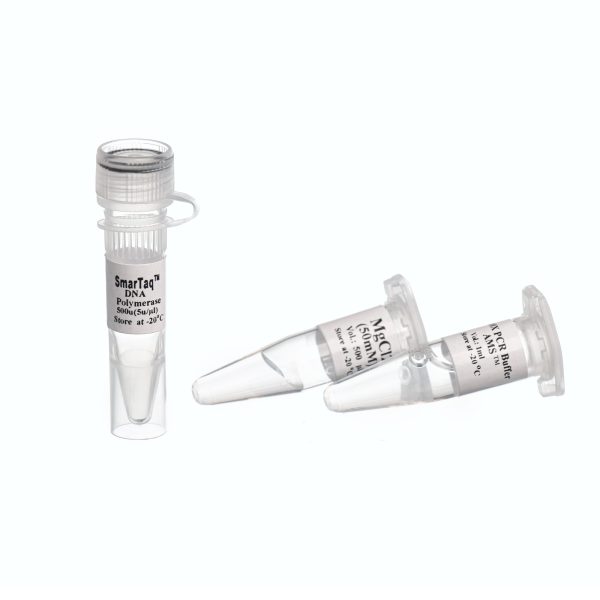
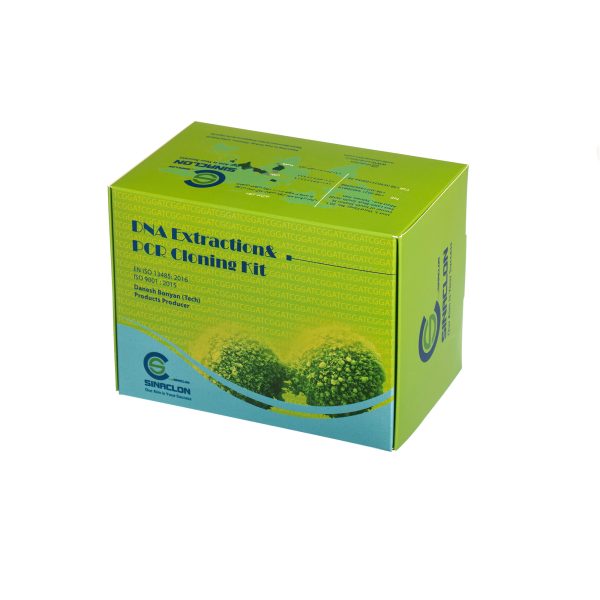
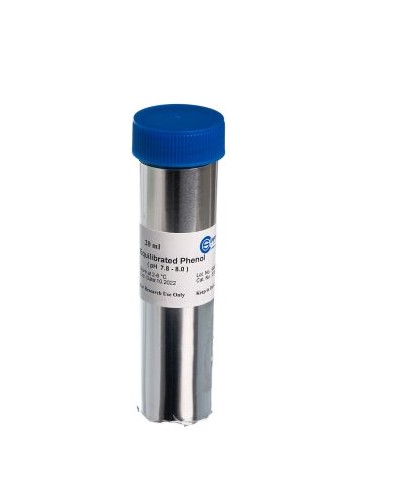
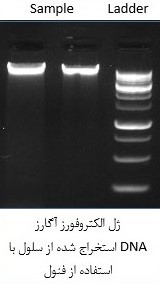

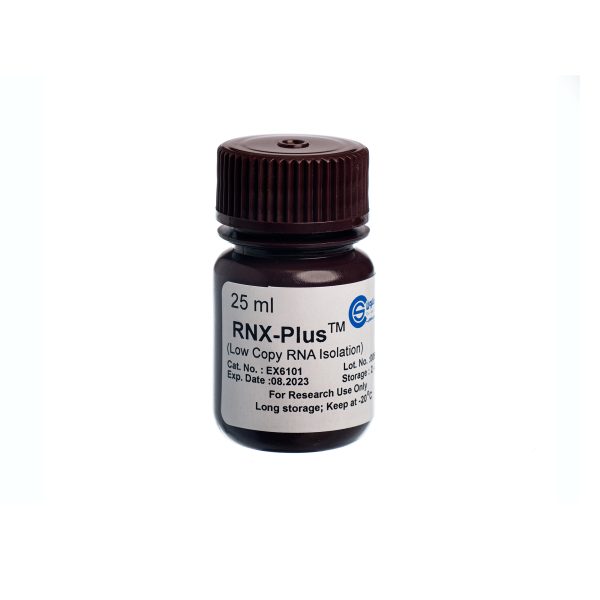

نقد و بررسیها
هنوز بررسیای ثبت نشده است.